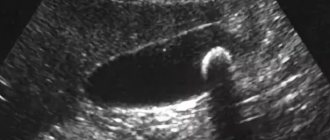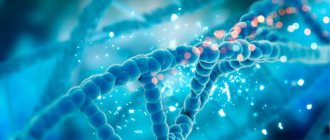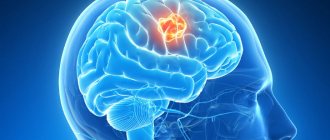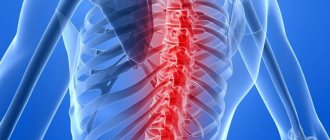- Home >
- Clinic services >
- Rehabilitation >
- Consequences of a stroke
Cerebrovascular diseases are a serious social and medical problem, the relevance of which is determined by the high percentage of deaths and disability of the population.
Stroke is one of the most dangerous complications of these diseases. One out of every 10 deaths is due to stroke. This makes it the third most common cause of death in developed countries, behind only coronary heart disease and cancer. Stroke is an acute condition that occurs as a result of a sudden disruption of cerebral circulation, lasting more than 24 hours, resulting in damage to the integrity of brain tissue and depression of neurological and cerebral functions.
At the MART clinic on Vasilyevsky Island
- Experienced doctors (including those practicing in the USA and Europe)
- Prices affordable for everyone
- Expert level diagnostics (MRI, ultrasound, tests)
- Daily 8:00 — 22:00
Make an appointment
Stroke is divided into two types: hemorrhagic and ischemic. Hemorrhagic stroke associated with hypertensive intracerebral hemorrhage can only be treated surgically. Ischemic stroke, or cerebral infarction, is treated with medications and other (non-surgical) means.
Cardioneurology: integration and specialization
Stroke is one of the most painful problems of modern medicine [1]. Increasing morbidity, high mortality and severe consequences for survivors are bringing the problem of cerebrovascular accidents to the national level. The pressure of the economic, social and medical components of the problem on the public health care system, society and family not only persists, but also increases. The costs of treating patients with acute cerebrovascular accidents have increased many times over the past decades, but this, so far, has only led to a decrease in mortality in the acute period of the disease. It is becoming increasingly clear that the strategy to combat stroke has not only technological, but also ideological gaps [2]. In the fight against stroke, new interdisciplinary solutions are needed in the field of prevention and treatment of a wide range of diseases of the cardiovascular system, the course of which is complicated by cerebrovascular accidents. Stroke is the outcome of various diseases of the heart, blood vessels, and blood; its development is caused by disorders of carbohydrate and fat metabolism [2]. But the pathogenesis of stroke is most closely associated with heart pathology. Back in the seventies of the last century, in the works of N.K. Bogolepov and his colleagues, the basic mechanisms of cardio-cerebral relationships in vascular diseases of the brain were studied. More than 20 years ago, N.V. Vereshchagin identified the most pressing clinical problems of a new integral direction of medical science and practice - cardioneurology [3]. The commonality of the etiology and pathogenesis of cardiovascular diseases has led to the formation of generally accepted ideas about “coronary heart and brain disease” (Gusev E.I., 1992). Modern cardioneurology is not a new specialty, but a current integrative scientific and practical direction in medicine, the main goal of which is the study of the heart in various forms of vascular lesions of the brain and the study of the brain in heart diseases, hemodynamic disorders associated with cardiac surgery [1]. Cardioneurology solves a number of pressing clinical problems that require the consolidation of efforts of cardiologists, neurologists, cardiac surgeons, specialists in interventional medicine, representatives of radiation, functional and laboratory diagnostics. The high level of specialization of modern medicine, reflecting the need for in-depth knowledge in the context of an increasing volume of information, does not contradict the modern trend of comprehensive study of the most pressing problems. The effectiveness of this approach was demonstrated by the 1st National Congress “Cardioneurology” held in December 2008. The field of interest of cardioneurology is very wide and goes far beyond clinical neurology. It involves studying the cardiac aspects of ischemic stroke, the influence of heart pathology on the course of the post-stroke period and the progression of chronic cerebrovascular insufficiency [1-5]. Cardioneurology opens up new opportunities in the field of preventing cerebrovascular accidents. The study of the mechanisms of brain damage in diseases of the cardiovascular system and the development of methods for their compensation complements the traditional ideas about risk factors that underlie the modern system of stroke prevention. Thus, already within the framework of cardioneurology, such independent directions as cardioneurology of emergency conditions, cardioneurology of the post-stroke period, cardioneurology in cardiovascular surgery, and preventive cardioneurology are being developed. All of them require the participation of practitioners and researchers of various specialties. The development of cardioneurology has been facilitated by the latest advances in the field of functional diagnostics, imaging of the brain, blood vessels and heart, and cardiovascular surgery. For many decades, the subtle mechanisms of cerebral ischemia were inaccessible for in-depth study. Ultrasound methods for studying blood vessels and the heart, long-term recording of blood pressure and ECG, contrast angiography, and MRI, stress tests, modern laboratory tests - these and many other diagnostic methods, which have become widespread in clinical practice, have created the necessary information base for the formation of new ideas about the nature of the stroke. The concept of stroke heterogeneity determined the transition of vascular neurology to a new level of development, at which heart diseases began to play a major role and the term “cardioneurology” began to replace the usual “angioneurology”. Since it became obvious that the division of strokes into hemorrhagic and ischemic is not exhaustive, a rapid and extremely fruitful study of the pathogenetic subtypes of ischemic strokes began. It turned out that in most clinical observations the doctor is faced with the need to assess the state of the cardiovascular system as a whole (cardioembolic, hemodynamic stroke), and the role of the neurologist in the diagnostic process cannot be limited only to a topical diagnosis. The course of the disease and its outcomes are largely determined by the state of central hemodynamics and heart function. A significant part of cerebrovascular disorders is pathogenetically closely related to changes in peripheral blood (stroke of the hemorheological microocclusion type). Often severe brain damage occurs due to gross pathology of extracranial arteries (atherothrombotic stroke). Within a short period of time, a refined pathogenetic diagnosis of ischemic stroke became part of clinical practice. It became clear that ideas about the nature of stroke go far beyond the competence of a neurologist. The addition of a cardiologist to the staff of the neurovascular departments became the logical organizational completion of the structure of a modern hospital designed to provide care to patients with acute cerebrovascular accidents. It would be a mistake to consider cardioneurology as a simple sum of knowledge accumulated in the field of cardiology and vascular neurology. Cardioneurology is a field of medical science and practice that is limited to the participation of the brain in pathological processes associated with the circulatory system. Within the framework of cardioneurology, a number of pressing clinical problems are currently being solved, which include [1,2,4]: • Development of effective areas for stroke prevention; • Study of pathogenetic subtypes of ischemic stroke; • Prevention and treatment of acute cerebrovascular accidents in patients with arrhythmias and heart failure; • Prevention and treatment of acute cerebrovascular accidents in patients with stenosis and occlusion of the main arteries; • Prevention and treatment of acute cerebrovascular accidents in patients with coagulopathies; • Study of the influence of cardiac pathology on the course of the post-stroke period and the progression of chronic cerebrovascular insufficiency; • Prevention of fatal cardiac events in the immediate and late post-stroke periods; • Study of the cerebrovascular effects of antihypertensive therapy and the prevention of associated hypoperfusion cerebral complications; • Prevention of cerebral complications during and after open heart surgery (coronary artery bypass surgery, valve replacement).
Symptoms of the disease
Speaking of death, this requires damage to a large area of the brain. The smaller the affected area, the less dire the consequences, and the symptoms of a stroke are quite vivid, so it is important to know them in order to provide timely assistance and promptly call doctors. The disease develops rapidly and is observed:
- Strong headache;
- weakness;
- numbness;
- lack of coordination;
- nausea;
- dizziness;
- speech disorders.
If qualified medical assistance is provided within 2 hours, the likelihood of severe consequences is reduced.
These are the very first symptoms of a stroke, and further possible:
- coma;
- paralysis;
- swallowing disorder;
- convulsions;
- drooping of the corners of the mouth and eyes;
- more severe speech impairment.
One important fact should be noted - one side of the body is affected; the patient may not feel it completely, from the toes to the face. The lesion may affect only one limb, for example.
Cardioneurological examination
The development and implementation of algorithms for cardioneurological examination of patients at high risk of stroke and patients undergoing stroke is one of the important tasks of cardioneurology [5]. At present, the optimal scope of such an examination has been determined, which allows identifying the most significant mechanisms of cerebral circulatory disorders and suggesting the development of stroke of one or another pathogenetic subtype (Table 1). Diagnostic methods and pathogenetic subtypes of stroke
| Instrumental and laboratory studies | Pathogenetic subtype of ischemic stroke |
| Ultrasound Doppler diagnostic technologies: DS, TC USDG*, ultrasound transcranial monitoring of cerebral blood flow with embolodetection; | Hemodynamic Cardioembolic |
| Cardiological diagnostic techniques: echocardiography, ECG, 24-hour ECG and blood pressure monitoring; | Hemodynamic Cardioembolic Lacunar |
| X-ray contrast cerebral and coronary angiography; | Atherothrombotic Hemodynamic |
| X-ray or magnetic resonance imaging using special angioneuroimaging modes; | Atherothrombotic Hemodynamic Lacunar |
| Detailed laboratory study of the hemostasis system and rheological properties of blood; | Stroke type of hemorheological microocclusion Atherothrombotic |
| Laboratory study of biochemical parameters that determine the state of lipid and carbohydrate metabolism, reflecting the participation of immune mechanisms of atherogenesis; | Stroke by type of hemorheological microocclusion Atherothrombotic Hemodynamic |
* - duplex scanning and transcranial Doppler ultrasound Determining the required volume and nature of diagnostic studies seems to be the most important part of the diagnostic process in the context of a significant increase in the cost of treatment and the overcrowding of clinical practice with numerous, often uninformative, techniques. Many of these research methods are becoming a thing of the past (REG, EEG, EchoEG, fundus examination, lumbar puncture with cerebrospinal fluid analysis). This does not mean that for the purposes of differential diagnosis in clinical practice these and other techniques cannot be used that can provide additional information in cases requiring a detailed assessment, but in the process of studying the state of the cardiovascular system they have ceased to play an important role. It seems obvious that the main place in terms of examining patients with vascular diseases of the brain should be occupied by non-invasive techniques that carry information about the structure and function of the heart, blood vessels and brain. The main ones here are ultrasound research methods: duplex and triplex scanning, transcranial Dopplerography, echocardiography [2,3]. The addition of ultrasound methods, MRI and CT of the brain, and modern laboratory tests, allows, in most cases, to obtain sufficient information about the pathogenetic triangle “heart-vessels-blood”. However, in some cases, to clarify the state of the vascular bed, it is necessary to use angiography, high-speed spiral CT with contrast of the coronary and cerebral arteries, stress tests, transesophageal echocardiography and other more complex diagnostic methods. The result of a cardioneurological examination should be a clinical diagnosis, reflecting not only the picture of brain damage, but also the state of the cardiovascular system, hemostasis and blood rheology.
Ideas about the pathogenesis of stroke from the perspective of cardioneurology
Cardioembolic stroke
is one of the most common pathogenetic subtypes of ischemic cerebrovascular accidents.
According to modern research, cardiogenic embolism causes 20-30% of all ischemic strokes, and this number may increase as cardiological diagnostic methods are introduced into clinical practice. To date, more than 20 cardiac disorders associated with embolic complications have been described [4]. These are non-rheumatic atrial fibrillation, myocardial infarction, thrombosis of the left ventricle of the heart, mitral stenosis, endocarditis and other, rarer heart diseases. Not all of these pathological conditions can be detected by physical examination. Latent paroxysms of atrial fibrillation, mitral valve prolapse with myxomatous degeneration of the leaflets, aneurysm of the interatrial septum, atheroma of the aortic arch, myxoma of the left atrium, patent foramen ovale, thread-like fibers of the mitral valve and other heart pathologies do not manifest characteristic, specific symptoms. It can be difficult to detect these violations even with targeted research. Diagnosis and correct clinical assessment of heart diseases that can lead to cerebral complications are also important because cardiocerebral embolism is a pathological process and not a completed event. Transcranial Doppler monitoring of the middle cerebral arteries allows us to detect microembolic signals in more than half of patients who have suffered a stroke due to the mechanism of cardiogenic embolism. In approximately 40% of patients, such signals are detected long-term (months and years) after the stroke [2,4]. A feature of cardioembolic stroke should also be considered the heterogeneity of the embolic substrate. Fibrin-erythrocyte thrombi, platelet aggregates, tumor particles, myxomatous elements, calcifications and atheromatous particles, fragments of valve vegetations can act as emboli. The morphological diversity of the substrate influences the treatment tactics of patients, which involves the use of both conservative and surgical methods. But conservative tactics, depending on the results of the examination, become very differentiated. It may include not only the prescription of anticoagulants and antiplatelet agents, but antibacterial therapy (endocarditis), the use of statins, antiarrhythmic drugs (paroxysmal atrial fibrillation). Surgical treatment brings encouraging results when detecting a cardiac tumor and patent foramen ovale [3,4,5]. In some cases, there is no alternative to heart valve replacement in severe endocarditis. Endovascular occlusion of the left atrial appendage is promising in order to prevent cardiogenic embolism in atrial fibrillation. It is obvious that with the expansion of knowledge about the nature of cardioembolic stroke, the possibilities of preventing and treating brain damage will increase. Hemodynamic stroke
accounts, according to various authors, from 8 to 53% of all ischemic strokes.
Such significant differences in the frequency of this pathogenetic subtype of ischemic stroke reflect the magnitude of unused diagnostic capabilities in determining the mechanisms of cerebral ischemia. A hemodynamic stroke is based on a discrepancy between the blood supply needs of the brain and the capabilities of the cardiovascular system. The formation of clinical symptoms of stroke occurs against the background of a long-term deficiency in the blood supply to the brain, caused by changes in its vascular system. A decrease in autoregulation of cerebral circulation, adaptation to the action of meteorological factors, physical and emotional stress, leads to a direct dependence of cerebral hemodynamics on the efficiency of the heart. Under these conditions, any pathological conditions that lead to a decrease in cardiac output (coronary insufficiency, arrhythmia, increased load on the myocardium) are inevitably accompanied by cerebral ischemia. Hemodynamic stroke is always the result of circulatory decompensation, in which the brain suffers as one of the main consumers of cardiac output [2,3]. Data obtained at the Scientific Center of Neurology of the Academy of Medical Sciences indicate the priority role of cardiac disorders in hemodynamic stroke [4]. As a result of cardiac examination, a variety of heart pathologies are detected in 70% of patients with hemodynamic stroke. Stratification of cardiogenic causes of hemodynamic stroke demonstrates that the most common causes of cerebral ischemia are silent myocardial ischemia and persistent atrial fibrillation. Next in frequency: sick sinus syndrome, paroxysmal atrial fibrillation and acute myocardial infarction. Less commonly, hemodynamic stroke is caused by: frequent ventricular extrasystole, transient atrioventricular block, ventricular fibrillation and pacemaker failure. All of these disorders can cause a reduction in cardiac output. In most cases, transient, asymptomatic cardiac disorders, revealed during cardioneurological examination, are associated with the hemodynamic mechanism. It should be noted that not only cardiac pathology underlies hemodynamic stroke. In some cases, decompensation of cerebral hemodynamics is associated with disturbances in the autonomic regulation of vascular tone and heart function. An example is hypotensive crises in patients suffering from parkinsonism. The hemodynamic mechanism of brain damage is also present in cases of stroke associated with arterial hypertension. The pathological basis of such damage is pathological processes in the arteries of the muscular type, occurring with their sclerosis, thickening and deformation. Hypertensive angioencephalopathy is the result of restructuring of the arterial system of the brain due to long-term hypertension. In hypertension, the entire cardiovascular system, and above all, the heart, is subject to remodeling. Left ventricular hypertrophy, dilation of the cavities of the heart, relative insufficiency of the valve apparatus, cardiosclerosis - lead to the formation of systolic and diastolic dysfunction. The result of remodeling is a decrease in hemodynamic reserve - the ability to maintain sufficient cardiac output under changing loads. Under these conditions, the immediate cause of stroke is most often a hypertensive crisis. An increase in the load on the myocardium leads to a decrease in minute blood volume, which in conditions of hypertensive angiopathy results in a hemodynamic ischemic stroke. Hemorheological stroke
is a special form of acute cerebral ischemia, which is based on altered blood properties.
Cerebral ischemia during hemorheological stroke is directly related to the blockade of microcirculation. Numerous factors lead to an increase in blood viscosity, among which the most important are: erythremia, hypercoagulation, hyperfibrinogenemia, hyperglycemia, dyslipidemia. Timely assessment and correction of these factors is absolutely necessary in both preventive and treatment programs aimed at compensating cerebral hemodynamics. Atherothrombotic stroke
is the most common and, as a rule, severe pathogenetic variant of stroke. Atherothrombosis usually affects large main arteries that have significant atherosclerotic changes. The absolute annual risk of stroke with stenosis of one carotid artery reaches 12–16% [5]. Large atheromas of unstable structure create favorable conditions for thrombus formation, which leads to artery obstruction. Timely diagnosis of atherosclerotic changes in the large arteries of the brain is one of the most important areas of cardioneurology. Assessing the degree of risk, feasibility and method of surgical intervention is possible only with a comprehensive examination of the state of the cardiovascular system.
Treatment of stroke and its consequences at the MART center
Stroke, if we consider it as one of the types of stroke, requires treatment only in a medical institution. It should be recalled that hemorrhagic stroke can only be treated surgically. Therefore, drug and other (non-surgical) methods of treating ischemic stroke and its complications will be described in detail below.
Any drug treatment is prescribed by the attending neurologist according to an individual course; therefore, the drugs given below are not recommended to be taken independently.
After the patient’s normal vital processes (breathing, heartbeat, etc.) are restored, drug therapy begins:
- Thrombolytic therapy. The tactics of thrombolytic therapy is the use of medications aimed at resolving blood clots (thrombi). For this purpose, the following are used: thrombolytics of the 1st, 2nd and 3rd generations (streptokinase, alteplase, retaplase, etc.)
- Anticoagulation therapy. Based on the use of drugs that improve blood flow. Such as: heparin, indobufen.
- Antiplatelet therapy. Aimed at preventing thrombosis. A classic representative of this group is acetylsalicylic acid (Aspirin).
- Neuroprotective therapy. This group of drugs is aimed at improving metabolic function in the brain. These include: cerebrolysin, glycine, emoxypine.
Heart diseases and the course of the post-stroke period
The role of heart pathology in the pathogenesis of ischemic stroke is not limited to the acute period of the disease. These diseases and syndromes have a significant impact on the post-stroke period. Decompensation of cardiac disorders, including anginal attacks, heart failure and cardiac arrhythmias, can aggravate and slow down the rehabilitation process, leading to serious complications. . Cardiac dysfunction is very common in patients who have had a stroke. Upon careful examination, they are found in 70-75% of patients [4]. Most often, ischemic stroke is diagnosed with various forms of coronary artery disease, including acute myocardial infarction, post-infarction cardiosclerosis, unstable and stable angina, cardiac arrhythmias and chronic heart failure. Heart damage due to rheumatism and endocarditis, the presence of prosthetic valves are not uncommon among this category of patients. It has been established that in patients with post-infarction changes in the heart muscle and a permanent form of atrial fibrillation, ischemic brain damage is more extensive, and the neurological deficit is more pronounced than in patients who do not have such disorders. In patients with severe strokes, relatively low rates of left ventricular contractility are recorded and episodes of silent myocardial ischemia are more often detected. The post-stroke recovery period against the background of chronic cardiac pathology is associated with latent hemodynamic disorders, which can cause circulatory decompensation during the period of active rehabilitation. The mortality rate of stroke patients over the next 5-year period significantly exceeds the expected mortality rate in the general population of persons of the same age and sex [4]. It is noteworthy that one of the main causes of mortality is cardiac pathology: acute and chronic heart failure, myocardial infarction and cardiac arrest. Active Holter monitoring in the post-stroke period makes it possible to detect life-threatening ventricular arrhythmias in 22% of patients, including paroxysms of ventricular tachycardia, and in 16% - silent myocardial ischemia. Patients with negative cardiac factors are at increased risk of serious complications, including sudden cardiac death, even in the absence of subjective or objective cardiac disorders at the time of examination. Another important factor associated with a high likelihood of sudden cardiac death is dysregulation of cardiac activity caused by focal brain damage. Neurogenic hypertension during brainstem ischemia, neurogenic arrhythmias, coronary syndrome are widely known to clinicians. Damage to the insular lobe of the brain is associated with increased mortality in the long-term post-stroke period. Autonomic regulation of cardiac activity suffers with multiple focal brain lesions in the periventricular zones.
Prevention
The following preventive measures will help prevent a stroke:
- Annual medical examination (cholesterol control, blood glucose levels).
- Regular blood pressure monitoring.
- Quitting alcohol and smoking.
- Sleep at least 7 hours.
- Daily walking.
- Proper nutrition (the diet should include a lot of protein, vegetables, fruits).
- Active lifestyle (exercise, yoga, swimming).
Stroke is a disease that leads to disability. To avoid it, you need to be careful about your health and lead a healthy lifestyle.
Prevention of cerebral ischemia during antihypertensive therapy
Currently, there is no doubt that adequate antihypertensive therapy can prevent the development of cerebrovascular complications, including recurrent stroke [1,4,5]. However, in patients with cerebrovascular pathology there is a risk of neurological complications caused by a significant decrease in blood pressure when its level falls below the lower limit of autoregulation of cerebral circulation. There are a number of factors that determine the safe tactics of antihypertensive therapy in the post-stroke period. It has been established that in the acute period of stroke, the increase in blood pressure is compensatory in nature and is aimed at maintaining adequate perfusion pressure in the peri-infarction zone. Therefore, the optimal level of systolic blood pressure in the acute phase of ischemic stroke is 160-180 mmHg. Art. and diastolic blood pressure 95-105 mm Hg. Art., which is associated with a lower incidence of early and delayed cardiovascular and neurological complications and less pronounced residual neurological deficit. In patients who have suffered a hemorrhagic stroke, the risk of recurrent hemorrhages is directly dependent on the level of blood pressure: the minimum risk is found at 120/70 mm Hg. Art., lower values were not achieved in studies. On the contrary, after an ischemic stroke, blood pressure levels must be maintained slightly higher, and optimal blood pressure values depend on the condition of the great arteries. In the presence of occlusive atherosclerotic lesions of the carotid artery, the lowest incidence of complications and the best outcomes are recorded with a systolic blood pressure of 130-140 mm Hg. Art., at higher or lower blood pressure levels, the risk begins to increase. With bilateral stenosis of the carotid arteries of more than 70% of the lumen of the vessels, there is an inverse relationship between the level of systolic blood pressure and the risk of stroke. Due to the danger of iatrogenic cerebral ischemia, blood pressure is maintained at 160-170 mm Hg. Art. – this tactic brings the best results. In patients with long-term and high hypertension, cerebral circulatory failure can occur at relatively normal blood pressure levels, so it is very important to plan a safe range of its reduction during long-term antihypertensive therapy. Studies by the Scientific Center for Neurology of the Russian Academy of Medical Sciences have shown that with the relative preservation of the cerebrovascular adaptive reserve and the absence of pronounced damage to the main arteries of the head, it is permissible to reduce systolic blood pressure by 20%, and diastolic blood pressure by 15% from the initial drug-free level. During treatment, as a rule, blood pressure approaches the so-called “target” levels - 120 - 130 mmHg. However, for patients with clinical manifestations of cerebral ischemia, gross atherosclerotic changes in the main arteries, hypertensive angiopathy, this requires a longer time.
Stroke in older women
According to statistical studies, stroke occurs in 1.5-2% of the population every year, while timely medical care is provided only in 50% of cases. It is for this reason that this pathology often causes disability and death.
As a rule, women are susceptible to stroke after 60 years of age, while in men this risk occurs much earlier - after 40 years of age. This is largely due to hormonal disorders that occur in the body of women during menopause. Smoking, alcohol, long-term use of hormonal drugs, and blood clotting disorders also contribute to the development of stroke in women.
Women suffer the pathology more severely than men and only a small percentage of patients return to a normal lifestyle. The reason for this is untimely provision of medical care.
Prevention of complications during and after open heart and large vessel surgeries
One of the most pressing tasks of modern cardioneurology is the prevention of neurological complications during open-heart surgery, which is due to the steady growth of surgical interventions of this kind. Cerebral complications of cardiac surgery can be divided into two types [4]. Complications of the first type: death due to stroke and hypertensive encephalopathy, non-fatal stroke, transient cerebrovascular accident. Complications of the second type: deterioration of intellectual functions, confusion, memory impairment, seizures. The incidence of stroke in the postoperative period is about 2%; with diabetes mellitus and atherosclerosis of the carotid arteries, the risk of stroke reaches 8%. Risk factors for complications of the first type are atherosclerosis of the aorta, previous stroke, the use of intra-aortic balloon counterpulsation, diabetes mellitus, postoperative atrial fibrillation, arterial hypertension, old age, left ventricular thrombosis, perioperative hypotension. The immediate causes of intra- and postoperative cerebral damage are embolism, decreased cerebral blood flow, contact activation of blood cells during artificial circulation and metabolic disorders. The most common source of embolism is atheromatous masses of the ascending aorta during the insertion of cannulas for the heart-lung machine and manipulation of vessels during the creation of anastomoses with shunts. A significant point should be considered a decrease in cerebral perfusion caused by atherosclerosis of the cerebral arteries and relatively low average blood pressure, non-pulsatile blood flow during certain types of artificial circulation. Prevention of neurological complications of open heart surgery is based on accurate knowledge of their causes. Since aortic atherosclerosis is one of the main predictors of neurological complications, it is necessary to accurately assess the condition of the ascending aortic arch. Identification of atherosclerotic plaques protruding into the lumen of the aorta, mobile, heterogeneous in structure, is an indication for the use of alternative surgical approaches (prosthetics of the affected area of the aortic arch in conditions of hypothermic circulatory arrest). New atrial fibrillation in the early postoperative period requires emergency treatment with anticoagulants and restoration of sinus rhythm. Patients who have recently suffered a myocardial infarction need to be examined using echocardiography to identify mural thrombi in the cavities of the heart. Timely preventive anticoagulant therapy can delay surgery for some time, but prevent severe complications. Delayed surgery in patients with recent stroke significantly reduces the risk of perioperative complications. The danger of cerebrovascular complications has a significant impact on the management of patients with combined damage to the blood vessels of the heart and brain. In most large vascular centers, reconstruction of the main arteries of the head is performed before myocardial revascularization, with the exception of cases of coronary artery bypass grafting for emergency indications.
Literature
1. Suslina Z.A. Vascular diseases of the brain in Russia: achievements and unresolved issues. Cardioneurology. Proceedings of the 1st National Congress “Cardioneurology”. Edited by M.A. Piradov, A.V. Fonyakin. –M.: 2008. P. 7-10. 2. Simonenko V.B., Shirokov E.A. Preventive cardioneurology. – St. Petersburg: FOLIANT Publishing House LLC, 2008. 224 p. 3. Simonenko V.B., Shirokov E.A. Fundamentals of cardioneurology: A guide for doctors. – 2nd edition, revised and expanded. – M.: Medicine, 2001. – 240 p. 4. Fonyakin A.V. Modern concept of cardioneurology. –2006.










